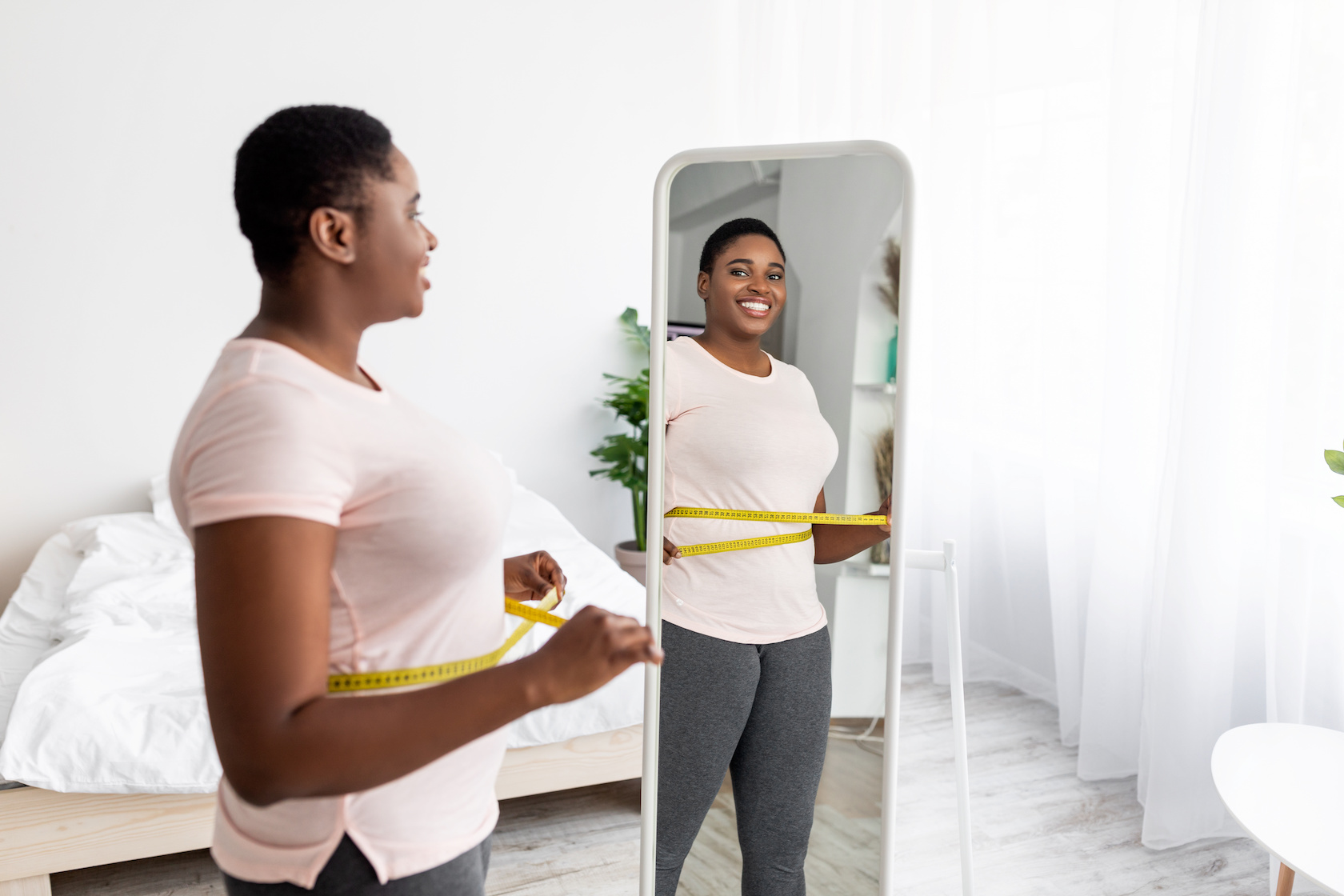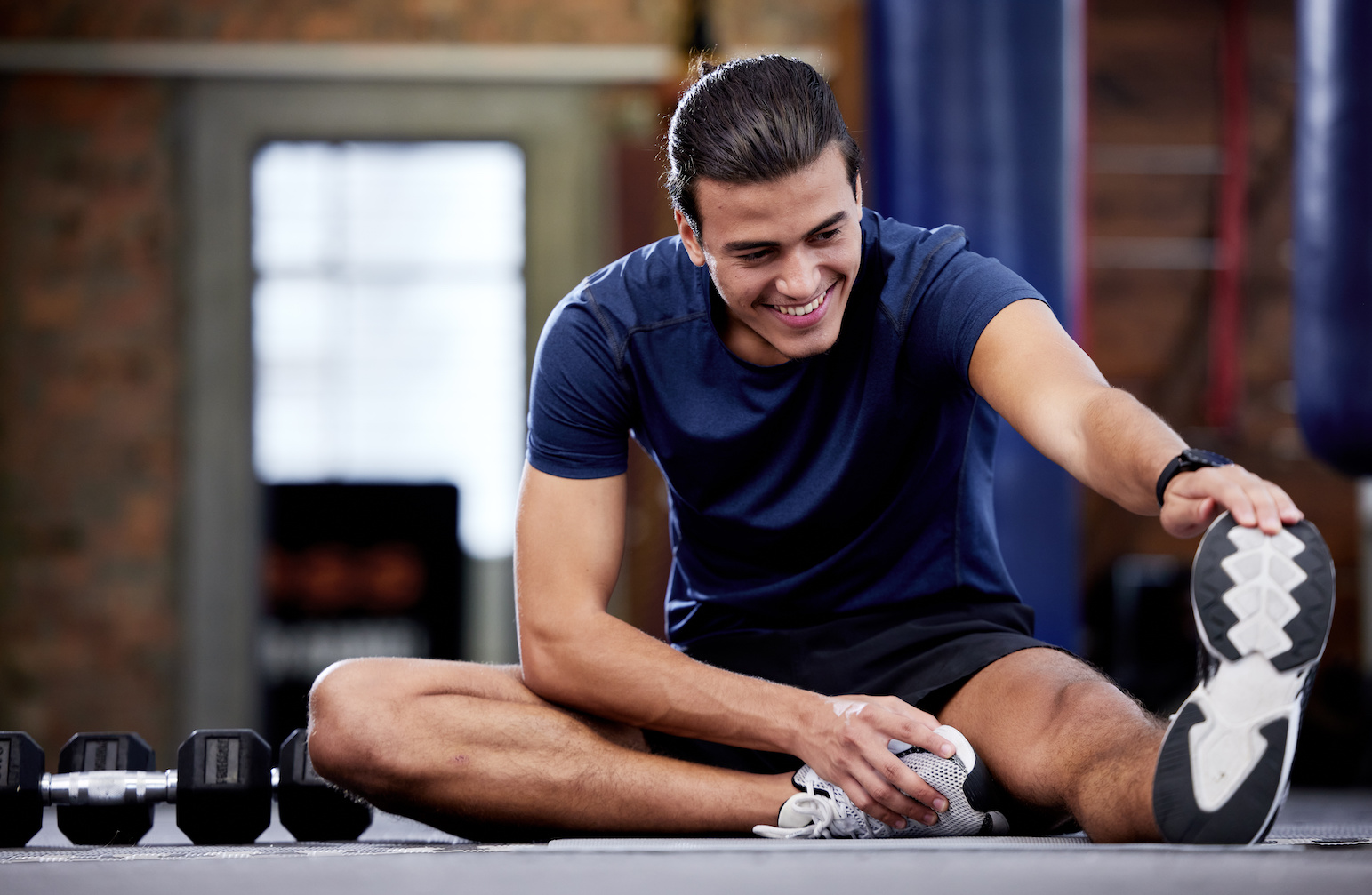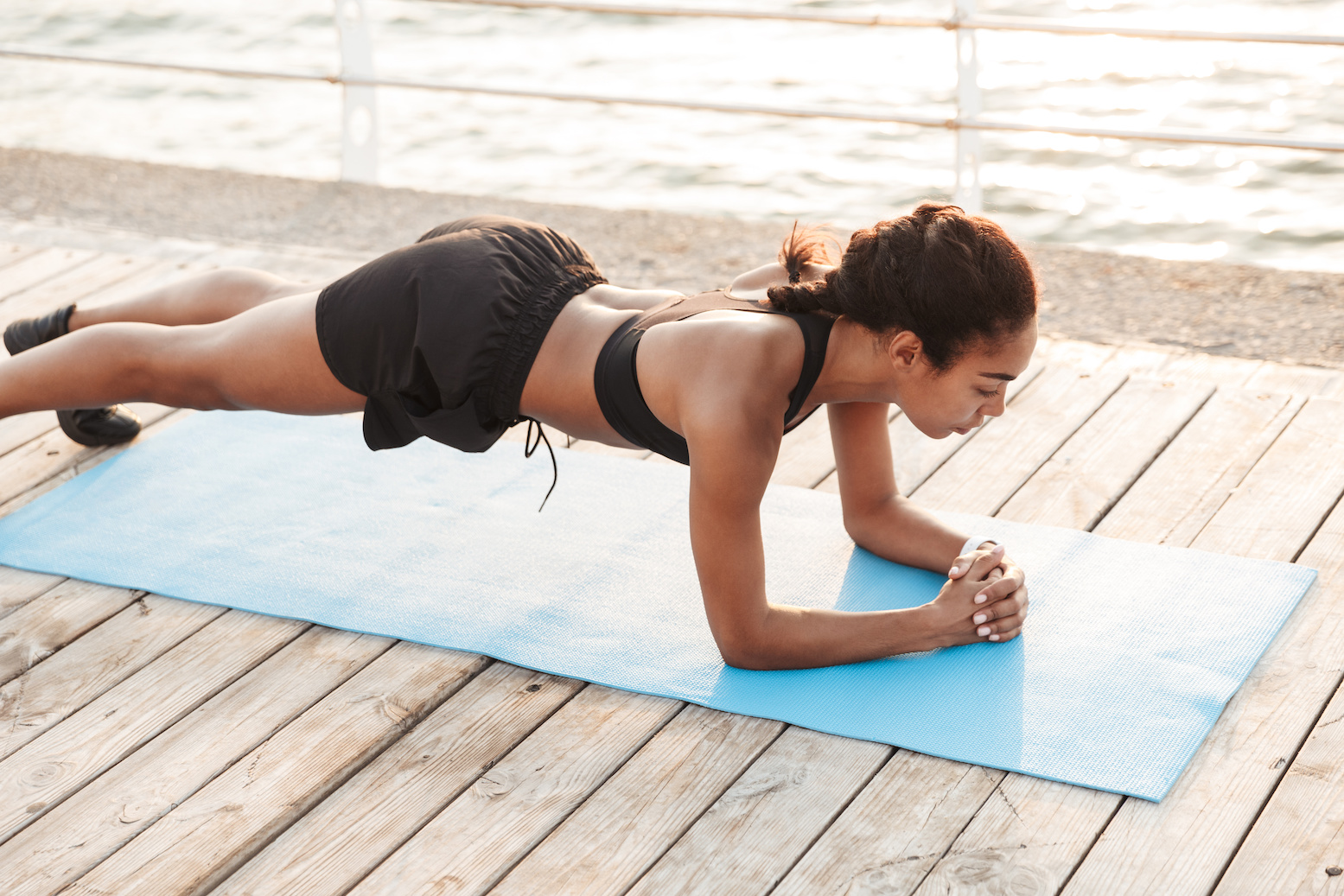The 5 Components of Physical Fitness and How to Improve Them
If you’re looking to start a new fitness journey, or even if you’re a seasoned workout buff, it’s good to understand the important components of fitness. There are five basic areas including body composition, flexibility, muscular strength, and muscular and cardiorespiratory endurance. Understanding how these fitness components work can increase the effectiveness of your workouts and physical fitness.
What are the five components of fitness?
1. Body composition

Body composition is a measure of the ratio of fat mass to fat-free mass. Fat-free mass includes things like muscle, bone, and organs. Body fat is important to human health. Having too little body fat has been linked with negative effects on hormone health and issues with maintaining bodily warmth.
On the opposite end of the spectrum, having too much body fat has been linked with negative health effects like a greater risk of heart disease, type 2 diabetes, and various other joint and respiratory problems.
What does a healthy body composition look like? According to the American Council on Exercise (ACE), the range of an “acceptable to fit” level of body fat is roughly 14-24% for men and 21-31% for women. However, this is a general range, it can be difficult to measure and may not be an accurate reflection of healthy body composition for all bodies.
Generally, improving body composition involves losing excess body fat and gaining lean muscle mass. Here are some things you can do to improve your body composition:
Eat a diet of mostly natural foods that are not highly processed.
Ensure you’re getting sufficient protein to support muscle growth.
Incorporate strength training into your workouts.
Walk for at least 15 minutes per day.
2. Flexibility

Flexibility is a measure of the range of motion of your joints that doesn’t incur pain or injury. Having a good degree of flexibility is important to maintaining balance and avoiding injury when in off-balance situations.
How can you test flexibility?
A simple test is the “sit and reach test,” which involves sitting on the ground and reaching for your toes. If you can touch your toes or come close, great! If not, you may have an opportunity to improve your flexibility. Similarly, you can also try touching your toes by bending at the hips and reaching down while standing up.
How can you improve flexibility?
One option includes spending time stretching various muscle groups 2-3 times per week. Another method involves what some refer to as “static stretching,” which involves holding a stretch for roughly 10-30 seconds. Examples of this second method may include Tai Chi, Pilates, and other similar workouts. Another thing to consider is improving diet and water consumption which may also have a positive effect on your flexibility.
3. Muscular strength

Muscular strength is a measure of a muscle’s ability to exert force over brief periods of time. Strength allows you to lift and carry weight, including your own. This is important to help maintain stability, protect your joints and bones, as well as to avoid injury.
How can you gain strength? It’s easy to become overwhelmed with the sheer number of strength training routines available. Thankfully, a relatively simple routine of strength training 2-3 times per week is often plenty for many people to improve muscular strength. To keep things simple, one option is to start with what are called compound lifts such as:
Bench press
Deadlift
Squat
Pullup
There are other compound lifts, but these four are a great start toward working most of your muscle groups without having to overcomplicate your workout routine when getting started.
There are different ways to perform compound lifts related to the weight and number of repetitions (reps). Some coaches and trainers will recommend starting with lower weight and moderate reps of 8-12 as you familiarize yourself with the movements. “Sets” are the number of times you perform these reps in a row. Many people might start with 2-3 sets and gradually increase. Over time, as you increase weight, you might need to reduce the number of reps.
4. Muscular endurance

Muscular endurance is a measure of a muscle’s ability to exert force over extended periods of time. In strength training, you might be exerting your muscles for seconds at a time. When training for muscular endurance, this might increase to minutes of exertion at a time, which can be significantly more exhausting.
With strength training, a commonly used rep range for many workouts is 8-12. For muscular endurance training, you might experiment with increasing this rep range to 16-25 reps. The specific number is not that important. Increasing reps means you will likely have to reduce the weight you’re lifting.
Another method of muscular endurance training is what some refer to as “isometrics.” This involves holding your body in certain positions for extended periods of time. A classic example is holding yourself in a plank position, which looks like a pushup at full extension. Other examples might involve holding yourself in a pullup position or other various holds using gymnastic rings and other simple devices. One popular feature of isometric exercises is you can often perform them merely with body weight and no machines or devices. This can be a simple and free option for beginning to improve muscle and muscular endurance.
Other endurance training methods include long-duration exercises such as:
Running
Swimming
Stair climbing
Cycling
5. Cardiorespiratory endurance

Cardiorespiratory endurance is a measure of the cardiovascular system’s ability to be exerted over extended periods of time. The body’s ability to endure physical stress involves more than just muscular endurance. The cardiovascular system includes your lungs, heart, and blood vessels. When your cardiovascular system works optimally, it can deliver sufficient oxygen, blood, and nutrients to your muscles and joints to help protect them and keep them functioning under stress.
According to the American College of Sports Medicine (ACSM), it is recommended that healthy adults get approximately 150 minutes per week of moderate-intensity aerobic activity. That equates to just over 20 minutes per day if you want to spread this time evenly throughout the week. This is easily achieved if you plan on taking a few 5-10-minute walks per day around the block, office, yard, or wherever else you regularly find yourself.
Some activities that can help build cardio endurance include:
Walking
Jogging
Cycling
Swimming
Why are the five components of fitness important?
The five components of fitness represent the core elements of strength, endurance, and body composition which determine your overall health. Knowing a few basic facts and tips about these components can help you make effective choices about the exercises, diets, and other factors that affect your health.
Understanding your body composition and future goals can help you choose diets and exercises that can assist in achieving those goals. Learning the current limits of your flexibility, strength, and endurance can also help you aim for realistic goals while also avoiding injury.
Overall, the five components of fitness are useful in helping you develop and maintain a healthy lifestyle that can improve your quality of life.
In conclusion
If you’re just starting out on your fitness journey, evaluate how active you have been and start adding in activities incrementally. This might simply be committing to getting up from your desk every hour to stretch and touch your toes. Or it could mean adding in a longer run on the weekends.
You could also consider starting with bodyweight exercises or compound lifts. Remember to include periodic stretching throughout the week to keep limber and avoid injury. Also, consider incorporating at least 20 minutes per day of walking or other aerobic activity. Along with this, ensure you’re making smart nutrition choices, so your body has the fuel it needs for optimal health and recovery.
It’s easy to get overwhelmed or feel discouraged when approaching physical fitness for the first time, after a long hiatus, or when recovering from an injury. Remember, a well-rounded exercise routine with a little bit of effort in each of the five components of fitness is a great start toward making healthy life choices. Even taking small steps in the right direction is a winning strategy!
SEDERA DOES NOT PROVIDE MEDICAL ADVICE. The information contained herein is for informational and/or educational purposes only and is not intended or implied to be a substitute for professional medical advice. Always seek the advice of your physician or other qualified healthcare provider with any questions you may have regarding a medical condition or treatment.